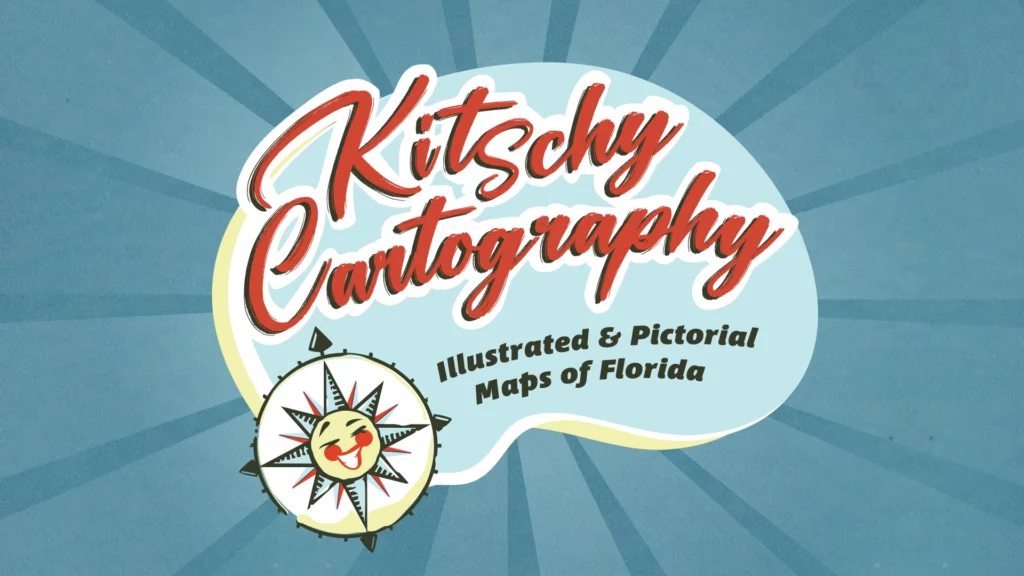Kitschy Cartography: Illustrated and Pictorial Maps of Florida

(TAMPA, Fla., May 17, 2022) — Maps aren’t just about geography. They can also help convey a broader idea of what to expect as you explore the areas featured on that map. The Tampa Bay History Center’s new exhibition Kitschy Cartography: Illustrated and Pictorial Maps of Florida is on exhibit now through April 2, 2023, in the Touchton Map Library’s Saunders Gallery.
“The maps in this exhibit are a bit more whimsical than what you may expect from a world-class map collection, but they certainly have their place in the cartographic history of our state,” says Rodney Kite-Powell, Director of the Touchton Map Library at the Tampa Bay History Center.
In Kitschy Cartography, visitors will see views of Florida and its cities through the eyes of artists who populate their maps with colorful characters that symbolize the history, industries, and people of the state.
Maps during the Age of Exploration (roughly the 15th and 16th centuries) used illustrations depicting sea monsters and other fantasy creatures. They outlined the dangers of trans-oceanic voyages and highlighted the notion that there were a lot of unknowns on the edges of the maps.
By the late 19th and early 20th centuries, images on maps came to be associated with what was known about a place rather than the unknown. Unfortunately, many of those images were stereotypical and offensive representations of African Americans, American Indians, immigrant populations, and women.
Caricatured city views are an important subset of the illustrated map genre. Marketed more toward locals than tourists, they often featured oversized images of people and businesses (who often paid sponsorships for their inclusion). These views were prevalent in the 1980s and early 1990s, and they were created for most cities within the state.
“In many ways, they are a much more accessible way for people to engage with maps of the state than something printed in Latin from the 16th century. All maps, these included, have stories to tell – they just do it in a more colorful way.”


